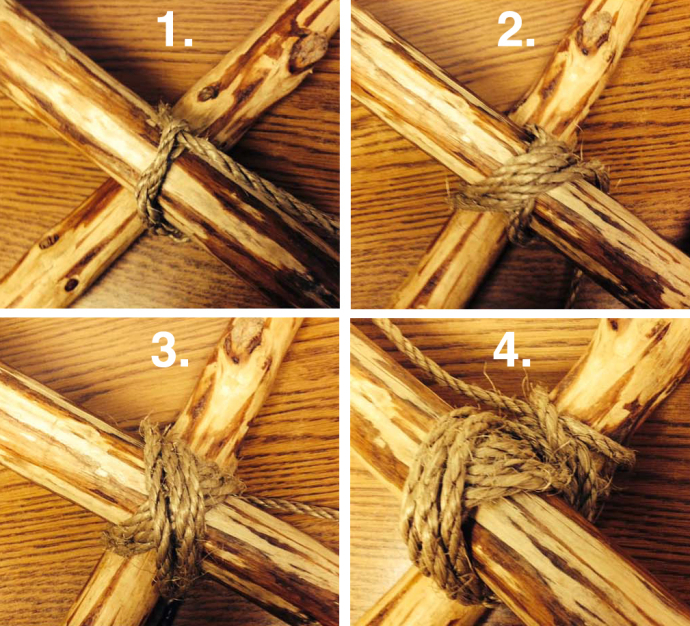When putting crossed braces on a structure to keep it from racking (as used when making a trestle), the most important lashing is the diagonal lashing, which gets its name from the fact that the wrapping turns cross the poles diagonally.
A diagonal lashing is used when there is a need to close a gap between two poles where they cross each other but do not touch.
The traditional diagonal lashing is tied as follows:
- Cinch the poles together by tying a timber hitch around them where they cross.
- Make three to four wrapping turns on the opposite diagonal to the timber hitch. Keep the wraps parallel to one another and pull them tight.
- Make three more tight wraps across the first three, again keeping them parallel.
- Take two to three frapping turns between the poles, tightly around both sets of wraps and complete the lashing with a clove hitch around one of the poles.
